If you find it fun when birds fly around your landscape, or you just enjoy watching them, then you should consider using our landscaping services for your backyard in Sydney in ways that attract them.
All you need to do is to include their basic needs such as food, water, nesting sites, and shelter in your landscape design.
Doing so will add tweets and cheerful chirps of birds in your landscape. Besides, you’ll enjoy watching bird species such as bluebirds that feature gorgeous plumage, swallows, and red-backed fairywren.
Provide Birds with Food
Just like how humans and pets need food, birds also need food. If you provided them with food, they’ll definitely come to your landscape.
Typically, birds feed on proteins such as larvae, worms, and insects and plant products such as nectar, nuts, fruit, berries, and seeds.
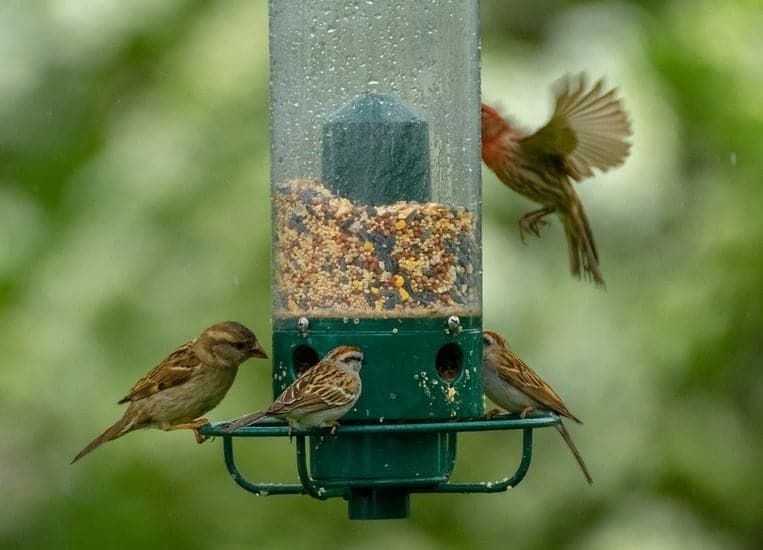
You should research the food types that the kind of birds you prefer. Add the food on your landscape to attract them. You can easily attract birds by adding bird feeds in your landscape.
If you want to feed them with seeds, include feeding methods such as birdseed ornaments, hopper feeders, window feeders, platform bird feeders, and tube feeders. You can formulate mixes of dried fruits, nuts, and seeds to attract certain bird species.
For instance, black oil sunflowers attract several bird species including sparrows, blue jays, nuthatches, finches, cardinals, and chickadees.
Thistle seed, on the other hand, requires using a special type of feeder to keep the tiny seeds in place. Thistle seed is ideal for attracting goldfinches.
You can hold suet using hanged cages. Suet contains ingredients that attract birds that feed on insects such as jays, nuthatches, and woodpeckers. If you want to attract hummingbirds, then fill the feeders with nectar or sugar water.
If possible, hang the feeders close to a shrub or tree such that they’ll use the branches as their staging area. They can rest on the branches as they check out the surroundings to confirm whether they’re safe.
Once they’re sure of their safety, they’ll grab a meal from the feeders and retreat back to their safe staging areas.
While some birds are comfortable in crowded areas, others prefer less crowded areas. Thus, spread out the feeders across different areas of your landscape to attract several bird species.
Attract Birds with Your Landscape
You can attract different bird species using your landscape. For instance, you can include plants with flowers that bear seeds and trees or bushes that bear berries and fruits to attract several types of birds.
Mix the plants and trees in such a way that they mature during different seasons. That way, birds will visit your landscape all year round.
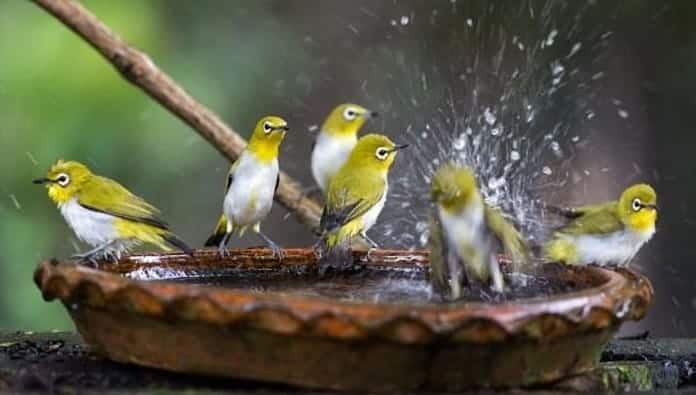
Also, consider trees whose fruits survive winter to attract birds that might be migrating and maintain those that hang around throughout the year.
Vegetation also assists in attracting birds indirectly. Bugs such as caterpillars and worms thrive in vegetation and attract birds that feed on insects.
Plants for the Spring Season
During spring, consider plants such as columbine and cardinal flowers to attract hummingbirds. You can as well attract hummingbirds with trumpet honeysuckle.
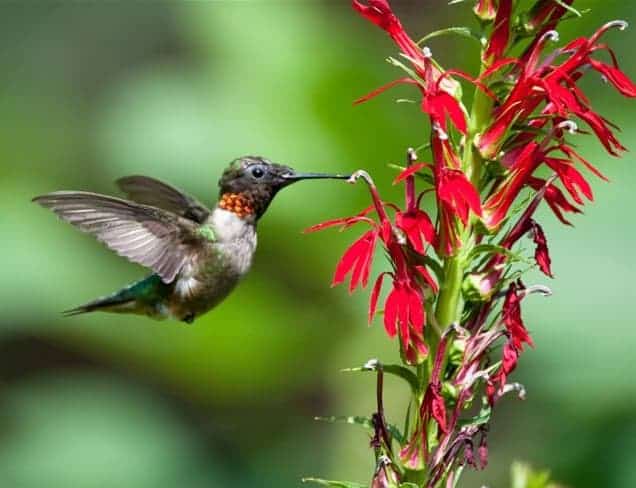
Baltimore orioles feed on the flowers produced by trumpet honeysuckle while hermit thrushes, as well as purple warblers, feed on its berries. Goldfinches take advantage of the downy section of milkweed seeds to line nests.
Plants for the Summer Season
Nectar found in salvia and bee balm attracts butterflies and hummingbirds during summer. They also produce seeds that attract more types of birds.
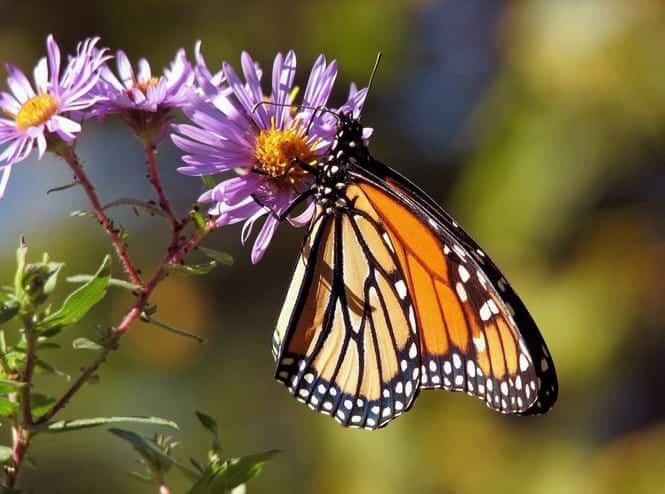
Some birds also love feeding on fruits that thrive during the summer season such as raspberries, pokeberries, mulberries, blackberries, elderberries, and serviceberries.
Also, it’s advisable to choose plants that grow natively in your area. They’ll flourish more than foreign plants. This is because they’ve already adapted to growing in your region. Since they’ll thrive, they’ll provide birds with sufficient nourishment.
Plants for the Autumn Season
During autumn, avians get ready for the winter season and early spring. Migratory species gather more energy before migrating. Thus, attract them with plants that thrive during the fall season.
Autumn fruits typically come from plants that flower during summer such as dogwood, chokeberry, and sumac. Sunflowers also attract birds. Bluebirds, titmice, and cardinals feed on fruits produced by gray dogwoods, red osier dogwoods, and flowering dogwoods.
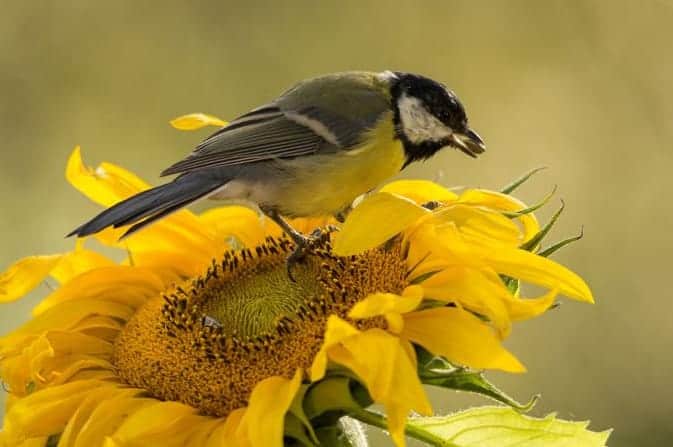
Red cedar produces fruits during fall and the fruits survive into winter and attract waxwings. Goldfinches are attracted by the large seedpods produced by coneflowers during late fall and late summer.
Thus, don’t cut them whenever their petals wilt. During winter, some birds scratch around the ground searching for seeds.
Virginian creeper is loved by nuthatches, blue jays, woodpeckers, and mockingbirds. Other great sources of food during fall include wild grape, crabapples, and staghorn sumac.
Plants for the Winter Season
You can also attract birds during winter by planting varieties that thrive in winter. Fruits that survive winter are a great source of meals for birds.
For instance, shrubs that produce berries are great sources of bird food during winter when other sources are scarce. Shrubs also work as nesting sites and shelter for birds throughout the year.
Fruit-bearing shrubs will also add color and attractiveness to your landscape throughout the year, especially if you choose those that bear orange, purple, red, and white fruits.
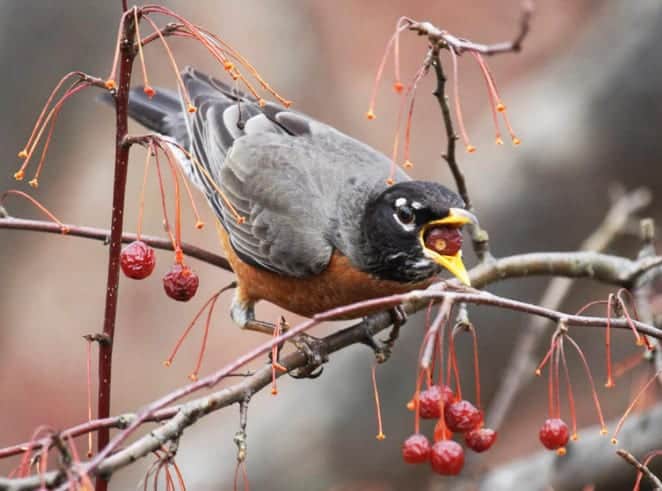
One of the best shrubs for attracting birds during winter is holly. It features spined leaves that offer refuge for different bird species. Besides, their red berries are very nourishing.
Planting different varieties of deciduous, semi-green, and evergreen trees and plants such as staghorn sumac, cranberrybush viburnum, red osier dogwoods, red chokeberry, hawthorn, bittersweet, blue spruce, winterberry, and beautyberry attract birds such as waxwings and cardinals.
By choosing the right types of shrubs for winter, your landscape will be full of happy chatters of different bird species.
Keep Some Areas Messy
Leave some piles of litter made up of leaves on your yard and rake some under the shrubs. Litter comprising of plant matter will work as mulch.

Birds like towhees and robins eat grubs and bugs that typically hide in decomposing plants. Thus, mulch will attract birds that dislike eating from feeders and instead prefer scratching around the yard.
Give Birds Spots to Cool Down, Hide, and Nest
Birds require branches and dense foliage to hide from predators. Thus, the way you design your landscape will determine whether it’ll attract birds. If your lawn is empty, birds won’t have a hiding place.
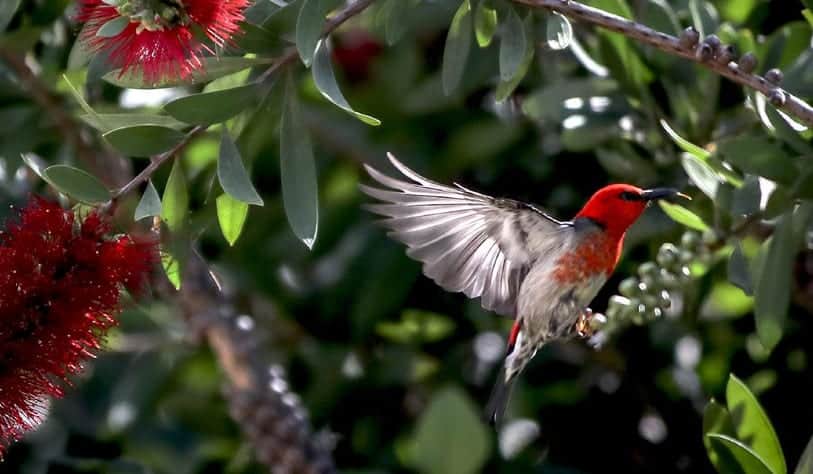
Thus, they’ll hardly risk sticking around. When choosing plants, consider brush piles, bushes, shrubs, and trees to give birds shelter as they grab food around your landscape.
During hot summer, birds flock under shady areas. Thus, consider oaks, aspen, sycamores, maples, and tulip poplars to give birds enough shade.
Avoid Spraying and Mowing
Tall grass offers nesting places and seeds. Thus, reduce the size of your lawn and leave a small area to allow tall grass and meadow plants to grow.
Also, avoid spraying your lawn with pesticides. Pesticides contain chemicals that harm birds. In case you’re worried about insect pests, birds will feed on them and eliminate them for you.
Provide Them with Water
Birds require clean and fresh water for drinking and bathing. Although you can find commercial birdbaths that come with pedestals, most birds prefer shallow water that’s set on the ground level. Thus, place the birdbath directly on the lawn and under a shaded area to ensure the water remains cool.
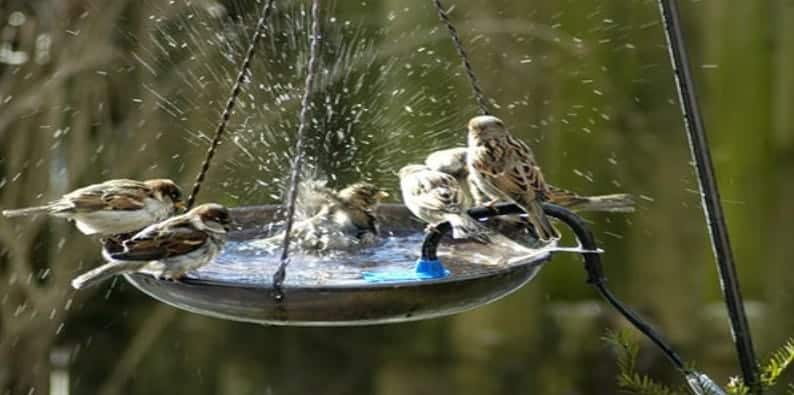
Alternatively, consider adding a fountain, water garden, or pond. Attach a dripper or mister onto the birdbath to alert birds about the availability of water. The dripper or mister will make water to glint and gurgle, thereby catching the attention of birds.
In case the water is deep, birds will ignore it. You can put some flat stones into the water to make it shallow enough for birds to go it.
Also, ensure the area surrounding the birdbath doesn’t have tall shrubs and glasses where predators may hide. Leave around 10-12ft free of shrubs and tall grasses to allow the birds to spot predators in good time and fly away.
Birds also need water during winter. You can prevent the water in the birdbath or other water features from freezing by submerging a heater in the water. In this case, choose a temperature-controlled type of water heater.
The heater will turn on automatically once the temperature of the water reaches the freezing point. If you’re a fanatic bird lover, consider a birdbath that comes with a water heating base.
Add Artificial Shelters
While not all bird species use roost boxes or birdhouses, many like them including titmice, bluebirds, and wrens. Birdhouses are great for raising bird families whereas roost boxes provide birds with a common shelter during colder months.
When adding roost boxes or birdhouses, consider those that have a natural color shade such as dark green or brown. Natural colors will make the house blend easily in the natural environment. Ensure the house has enough ventilation by making holes at the top.
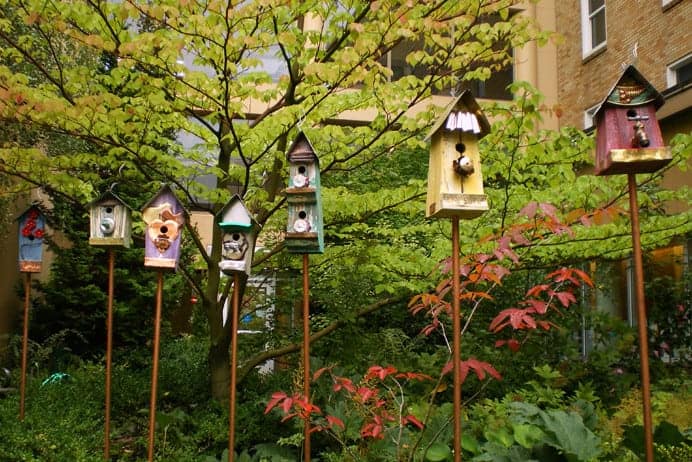
The holes will allow air circulation while keeping the interior temperature low during hot months. Also, ensure the opening on the house is sized according to the kind of birds you’re planning to attract. An opening that is too wide will allow predators into the house or allow unwanted bird species to shelter in the shade.
When choosing locations for birdhouses, keep the opening away from direct sunlight and winds. It’ll be best to position the house in such a manner that the opening faces southward. Additionally, it should be mounted at a safe height above the ground.
Also, ensure it’s away from surrounding tree branches to keep predators like rats, snakes, cats, and raccoons away. The location of the birdhouse should also be away from areas where predators are likely to hide.
Birdhouses or nest boxes are preferred by birds that nest on cavities such as titmice, woodpeckers, wrens, chickadees, bluebirds, nuthatches, and flycatchers. The reason behind this is that these bird species are more adapted to breed and nest in areas that are enclosed. Nest boxes are ideal for emulating natural cavities. Remember to ensure the nest box you’re buying or making has an interior space and entrance hole with dimensions that are ideal for the bird species that come to your garden often.
You can also include non-cavity shelter for birds that dislike cavity nests. There are many forms of non-cavity bird shelters including shrubs, trees, hedges, brush, and tall grass.
Birds can as well shelter on hanging baskets, mailboxes, and door wreaths. Just make sure you’ve included different sizes, shapes, and types of vegetation to keep nesting birds coming around more often.
Keep Cats Inside
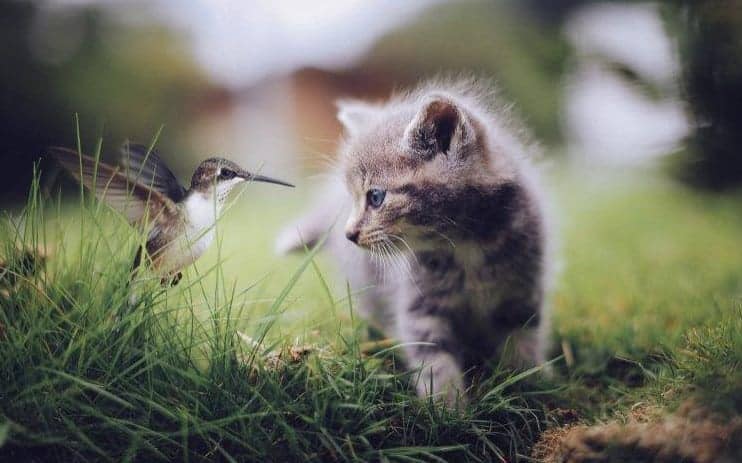
Pet cats can prey on birds. Thus, keep them indoors. However, if you still want them to wander outdoors, then ensure the birdbaths and feeders are set up in open places where birds can easily spot the cats and fly to safety before being caught.
Landscaping Services Available in Sydney
If you are looking for a trusted landscaping company in Sydney to work on your yard, reach out to NBG Landscapes today! We have over 10 years of experience working with clients all across Sydney, NSW. We provide complete landscape solutions. Give us a call for a free consultation.
Also read: Bee Friendly Garden Landscaping Ideas
